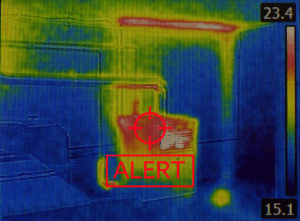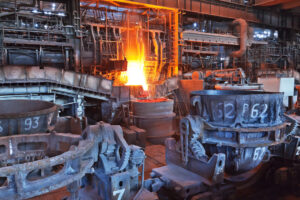Vibration is one of the biggest threats to image quality and the lifespan of video cameras. This is why you’ll notice that most cameras don’t work for too long in high-vibration environments.
Today, we’re talking about making choices that last—how to choose cameras that hold up even in high-shock and high-vibration environments. First, a quick primer about what these environments are so you can figure out if you need vibration-resistant cameras.
What Are High-Vibration Environments and When Do They Demand Vibration-Resistant Cameras?
Many industrial environments have high-vibration areas and therefore may need vibration-resistant video infrastructure even where the vibration can be felt by humans.
Why?
Because process machinery such as conveyors, feeders, and crushers constantly transmit vibration to building structures. If your cameras and monitors are mounted on the walls, they will feel these vibrations.
Processing plants, sawmills, mining facilities, aerospace factories, even some military applications are all examples of environments where you need vibration-resistant cameras.
It’s not just a matter of prolonging the lifespan of the equipment either. In high-vibration environments, the cameras get destabilized, which results in poor image quality. If your video feed is blurry or looks like it’s “trembling,” it’s probably because you’re not using the right kind of camera.
How Does Vibration Impact Video Cameras?
There are three major categories of components in a camera: optics, sensors, and electronic circuits. All of these have to work in perfect harmony for the camera to keep capturing high-quality, non-blurry images.
High vibrations can perturb this delicate equilibrium and cause the camera to malfunction or fail completely. In industrial settings, camera failure usually happens gradually and it usually starts with the PCB (Printed Circuit Board).
The PCB is an epoxy-coated unit that holds all the sub-components and wiring in a camera, save for the lens. If the camera is exposed to high vibration levels for prolonged durations of time, those sub-components and circuitry will gradually get separated from the PCB.
Vibration can be random (due to shock or the movement of heavy vehicles or equipment) or repetitive (due to continuous exposure to the operation of industrial machinery). In both cases, you can increase the lifespan of your camera and ensure that it captures high-quality video if you choose the proper equipment and install it the right way.
Choosing the Right Video Monitoring Equipment for High-Vibration Environments
Vibration-resistant cameras are designed with heavy-duty industrial applications in mind. Broadly speaking, this means that their PCBs and the coating used to glue the components and circuitry to it are created with durability and resistance in mind.
However, it’s not just about the camera itself. Even ruggedized cameras have to rely on sensitive components and the delicate equilibrium among them.
Thus, your safest bet is adding a vibration or shock mount to cameras installed in high-vibration areas. These mounts have a dual role:
- They stabilize the camera so it can capture crystal-clear images even if it is subjected to high levels of vibration.
- They absorb the biggest part of the shock to prolong the camera’s life expectancy.
Mounts are much cheaper than cameras, so it makes sense to “sacrifice” them and replace them more often. Just like our client who operates a log debarker in Mississippi did. The Opticom cameras they installed more than six years ago are still fully functional despite the high level of vibration on a debarker. All they had to do was replace one mount after 6 years of service mounted on their harshest machine, a log debarker.
Another Opticom camera survived getting hit by a log in a sawmill! And yes, it remained fully functional. The mount needed to be replaced but our client is still using the same camera that was hit.
Vibration-Resistant Cameras for Heavy-Duty Industrial Applications
If you manage an industrial facility, you probably already know that you need ruggedized cameras—off-the-shelf options may last for less than a month. It’s also important to note that not all ruggedized cameras are vibration-resistant, so when choosing your system, make sure that this box is ticked as well.
Once again, vibration-resistant mounts are just as important as the cameras themselves. A good video monitoring system for industrial applications is not cheap but, when you choose the right one, the ROI will be worth it.
Not sure which cameras and accessories are right for your industrial application? We’ve spent more than 50 years advising industrial facility managers on choosing the right video monitoring system to match their needs and their budgets.
We’d love to help you too! Get in touch with our consultants.







